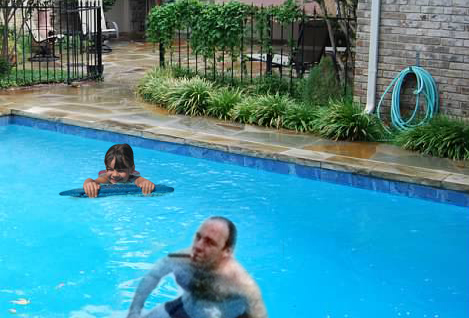Most Pool Service Starting At
$185.00 + tax
Drowning Prevention Tips for Residential and Public Pools

It’s true that swimming is an enjoyable activity, but you can’t let all the fun put your guests at risk from potential drowning disasters. Drowning is the leading cause of unintentional death in the world, and according to the World Health Organization (WHO), about 372,000 drowning deaths are reported annually. In the United States, about 67% of swimming pool drowning deaths involved children no older than 3 years old. It’s a frightening realization that a fun activity can turn south without a moment’s notice.
Thankfully, there are several things you can do to prevent drowning incidents and injuries from happening in your pool facility.
Create Pool Rules
The first thing you need to do is to establish a set of pool rules. These rules must be followed by every pool user, adults and children alike. These rules instruct swimmers on how to act correctly while they’re swimming or hanging out by the pool. You also have to be strict when implementing these rules because they’re there to prevent or at least minimize pool-related accidents, injuries, and deaths. Pool rules also help maintain the quality of your pools.
Do add the following when creating pool rules:
- Swim in proper swimming attire (no shorts or shirts)
- Toddlers must wear waterproof swim diapers
- Wear swimming caps to avoid clogging the filters with hair
- No diving in shallow areas
- Walk, don’t run when along the sides of the pool
- Shower before entering the pool
- Don’t swim if you have the flu, open wounds, warts or any other ailments that can contaminate the water
- No roughhousing or rough playing near or inside the pool area
Hire Professional Lifeguards
Lifeguards are professional and certified individuals who are not only there to keep an eye on your guests, but are also trained to save a life. It’s good to have a set of eyes looking out for your guests, especially when someone can unexpectedly drown. Lifeguards act without hesitation and immediately jump into action when the time calls for it. They’re also knowledgeable about the proper procedure when saving someone from drowning, and they can perform first aid and CPR.
Lifeguards also act as extra authority who swimmers respect. When lifeguards see that there are people not following the pool rules, they can provide a stern warning, or even safely escort them out of the pool area if they are consistently breaking the rules. Overall, lifeguards give your guests peace of mind and act as mediators when your guests step out of line.
Never Leave Children Unattended
Since children who aren’t proficient in swimming have a higher risk drowning, it’s best not to leave any child unattended. Always remind parents and guardians to stay with their children even if they leave them in the kiddie pool. If they’re too busy to watch over their kids, tell them that they can approach any lifeguard for help.
Offer Swimming Lessons
One way to introduce first-time swimmers to the water is by offering swimming lessons. Swimming is contagious and individuals who don’t know how to swim may develop an urge to learn this activity. Of course, only licensed swimming professionals are allowed to teach the different swimming courses. This ensures that students learn how to properly float and navigate the pool, minimizing the risk of drowning. Swimming lessons shouldn’t be limited to children. Adults are also welcome to learn, as well as experienced swimmers who want to improve their techniques.
Take Note: When conducting swimming lessons for beginners, be sure to provide essential swimming aids to assist the swimmers. Items like kickboards and other floaters reduce the risk of drowning because they keep the user afloat.
In Case of an Emergency or Disaster, Make Your Pool Inaccessible
Some pool disasters aren’t manmade. Earthquakes, strong storms and floods could cause chaos for your swimming pool or facility. If any catastrophic event occurs, be sure to evacuate everyone to a safe place and wait until the disaster ends. When the disaster has run its course, place barriers around the swimming pools and don’t allow anyone to swim for the time being. Accidental drowning happens quite often and it’s difficult to be prepared when an unexpected catastrophe hits. Before you open your pools to the public, have them professionally inspected, repaired, and serviced first. Pools that are properly taken care of after a disaster, don’t get damaged as easily and they are safer for swimmers.
Swimming is a fun activity but you can’t forget that drowning is a potential hazard. However, by implementing these drowning prevention tips, you’re minimizing or eliminating the risks of drowning-related deaths and injuries. Your guests will be more comfortable swimming in your pools, knowing that there are safety measures or lifeguards on standby and that your crew members are willing to teach them how to swim.
Contact Sterling Pool Service today if your swimming pool needs to be professionally serviced. We offer full-service:
- Pool cleaning service
- Leak detection and repairs
- Equipment repairs and installation
- Pool renovations
This applies to properties in Allen, Dallas, Garland, Murphy, Plano, Richardson, Sachse, and Wylie, Texas. Our services improve the quality of your pools, as well as your guests’ swimming experience. With fully functional and durable swimming pools, pool-related disasters are significantly reduced. Give us a call at 888-973-0274 and our friendly operators will be ready to help.
 A Native Pool Service Company
A Native Pool Service Company






